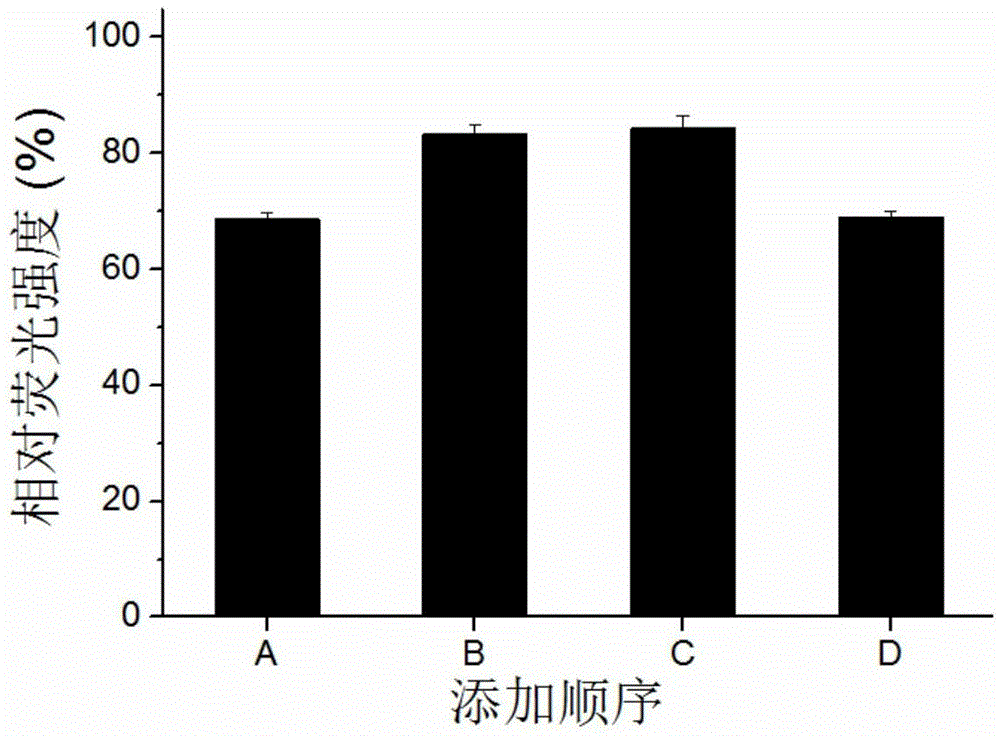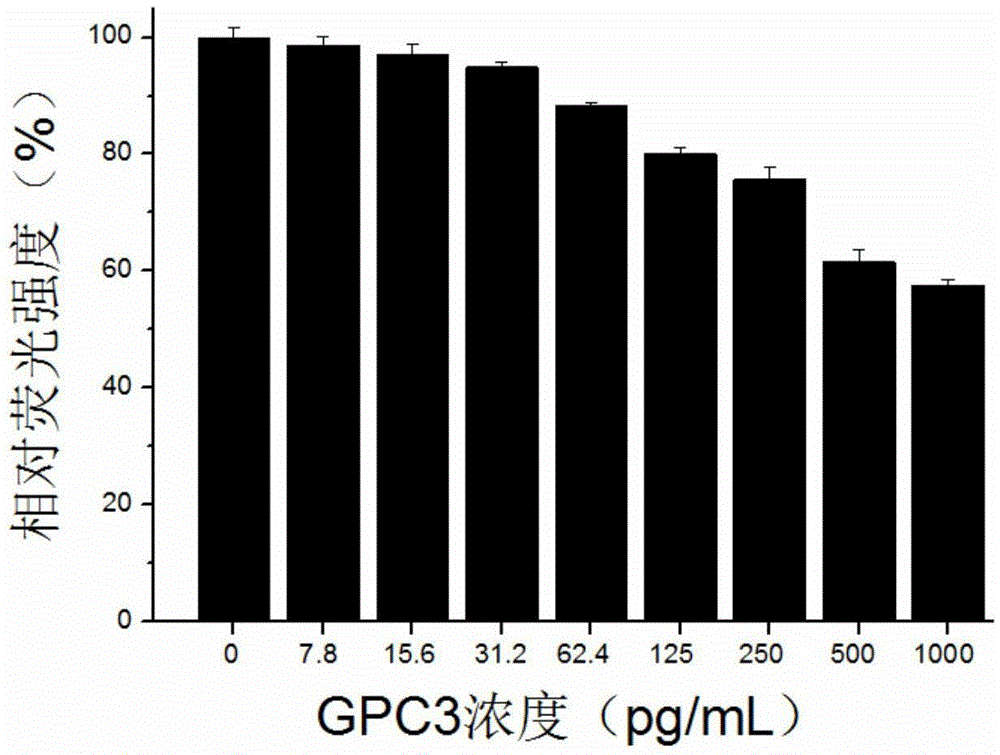Kit for high-sensitivity detection on proteoglycan and preparation method of kit
A proteoglycan, high-sensitivity technology, applied in the fields of biological analysis and medical detection, can solve the problems of different sulfation degrees and coupling sites, complex proteoglycan composition, and low detection sensitivity
- Summary
- Abstract
- Description
- Claims
- Application Information
AI Technical Summary
Problems solved by technology
Method used
Image
Examples
Embodiment 1
[0073] A kit for high-sensitivity detection of proteoglycan GPC3, comprising:
[0074] Carboxygraphene coupled to monoclonal antibody 1, said monoclonal antibody 1 is an antibody prepared after immunization with the 70 amino acid sequence fragments at the carboxyl end of the core protein of proteoglycan; said coupled monoclonal antibody 1 The concentration of carboxygraphene is 10 μg / mL;
[0075] The carboxyl graphene of coupling monoclonal antibody 2, described monoclonal antibody 2 is the antibody that the amino terminal 510 amino acid sequence fragments of the core protein of proteoglycan are prepared after antigen immunization; Said coupling monoclonal antibody 2 The concentration of carboxygraphene is 10 μg / mL;
[0076] Highly positively charged green fluorescent protein (ScGFP); the concentration of highly positively charged green fluorescent protein is 0.005 μg / μL;
[0077] Buffer: a solution containing a concentration of 10mM Tris-HCl and a concentration of 100mMNaCl...
Embodiment 2
[0100] Embodiment 2, optimization of reaction conditions
[0101] Effect of reagent addition sequence on GPC3 detection
[0102] Add 0.05-0.2 μg of carboxygraphene coupled with αGCN, 0.05-0.2 μg of carboxygraphene coupled with αGCC, 0.01-0.5 μg of ScGFP, and 30.001-0.005 ng of GPC into the 40 μL reaction system of the microwell plate in different order, Mix well, and place at room temperature in the dark for 15 minutes. After incubation, measure the fluorescence intensity (Ex: 470nm, Em: 509nm).
[0103] Among them: Group A is carboxygraphene coupled with αGCN, GPC3 and ScGFP mixed and then added with carboxygraphene coupled with αGCC; Group B is two kinds of carboxygraphene coupled with αGCN and αGCC respectively mixed with GPC3 and then added with ScGFP; C Group D is two kinds of carboxygraphene coupled with αGCN and αGCC, mixed with ScGFP and then added with GPC3; group D is mixed with carboxygraphene coupled with αGCC, GPC3 and ScGFP, and then added with carboxygraphene c...
Embodiment 3
[0122] Embodiment 3, the detection of GPC3 in buffer solution
[0123]Add 0.05-0.2 μg of carboxygraphene coupled with αGCN and 30-0.04 ng of GPC to 40 μL of 10 mMTris-HCl and 100 mM NaCl solution in a microwell plate, mix well, and place at room temperature for 5 minutes; then add ScGFP 0.01-0.5 μg, mix well, and store at room temperature Place it in the dark for 15 minutes; finally add 0.05-0.2 μg of carboxygraphene coupled with αGCC, mix well, and place it in the dark at room temperature for 10 minutes. After the incubation, measure the fluorescence intensity (Ex: 470nm, Em: 509nm). The schematic diagram of proteoglycan GPC3 detection process is as follows: Figure 9 shown.
[0124] The results show that with the increase of GPC3 concentration, the fluorescence quenching intensity mediated by it also gradually increases, and the detection sensitivity can reach below 10pg / mL (such as figure 2 ), much higher than the sandwich ELISA method.
PUM
| Property | Measurement | Unit |
|---|---|---|
| concentration | aaaaa | aaaaa |
| concentration | aaaaa | aaaaa |
Abstract
Description
Claims
Application Information
 Login to View More
Login to View More - R&D
- Intellectual Property
- Life Sciences
- Materials
- Tech Scout
- Unparalleled Data Quality
- Higher Quality Content
- 60% Fewer Hallucinations
Browse by: Latest US Patents, China's latest patents, Technical Efficacy Thesaurus, Application Domain, Technology Topic, Popular Technical Reports.
© 2025 PatSnap. All rights reserved.Legal|Privacy policy|Modern Slavery Act Transparency Statement|Sitemap|About US| Contact US: help@patsnap.com



